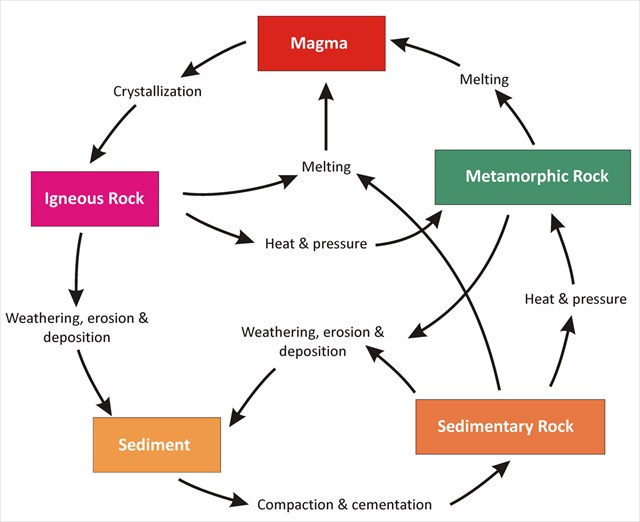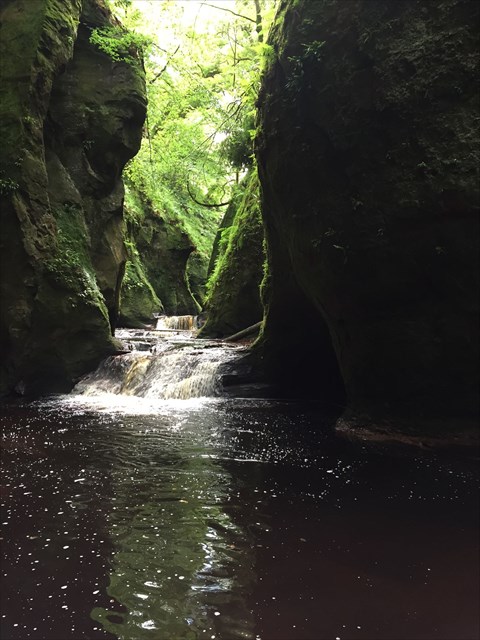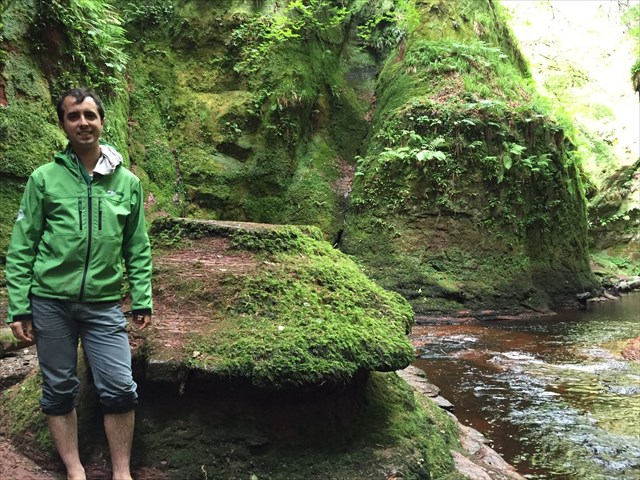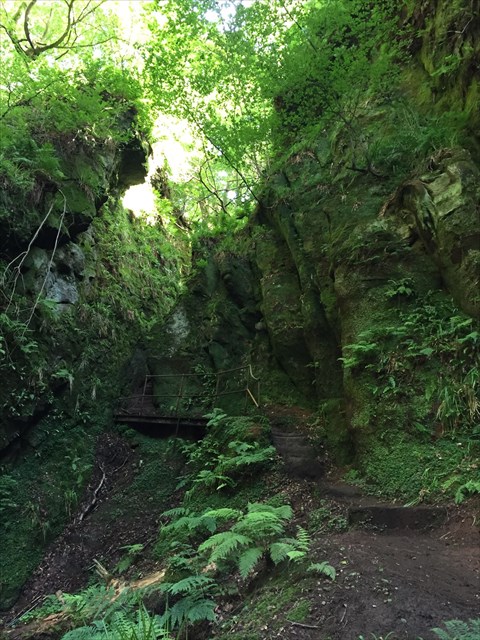What is Sandstone?
Sandstone is a clastic sedimentary rock, which means that it is comprised of smaller rock particles, which have been cemented together over time from precipitated minerals and pressure. Other types of sedimentary rocks are chemical, such as halite (rock salt), orbiochemical, such as chalk.
In order to be considered sandstone, the grains comprising the rock need to be sand sized (within the range of 0.0625 mm to 2 mm). When the rock particles are larger, such a pebbles or cobble of varying sizes, the rock is then considered to be conglomerate. If the particle sizes are too small, then mudstone or siltstone result.
Since rocks come in almost every color, this means that sandstone, as a derivative of these rocks, comes in many colors including tan, brown, yellow, red, grey, pink, white, and black. Sandstone is one of the weakest types of rocks in geology and therefore is eroded easily and quickly through natural forces. As a result, striking sandstone cliffs and formations can be viewed all over the world.
How is Sandstone Formed?
Erosion is a constant force on planet Earth and rocks are being constantly worn down and moved about at all times. In order for sandstone to form, the sand particles need to become stationary long enough, and with enough material to begin to accumulate. These situations arise in both terrestrial and marine environments. Terrestrial environments include rivers, alluvial fans, glacial outwash, lakes, and deserts. Marine environments include deltas, beach sands, tidal flats, offshore bars and sand waves.
The overlying weight of sand as it accumulates begins to exert pressure on the underlying layers. Despite sand being small, there are still large voids between the particles that make the rock structurally weak. This is resolved from minerals precipating and forming a cement to glue the particles together and filling the voids. The combination of the sand, void space, and the cementing material is called the matrix.
What is Weathering?
Weathering is the natural process were rocks are broken down into smaller components and it one component of the rock cycle (see below).
There are two types or weathering: chemical weathering and mechanical weathering.

Mechanical weathering is where rock are broken into smaller pieces through means such as sandblasting, water and glacial flows, freeze-thaw cycles, and plant root wedging.
Chemical weathering is where rock is broken down through a chemical reaction into a new material such as natural acidity in the air, groundwater, and the roots of some vegetation.
Why is the Water Red?
The water is red due to a molecule called Tannin and is common in many water bodies around the world. Plants produce this material as a defence mechanism and is present in tea and wine, which produces the slightly bitter taste. The tannin enters this river due to decomposing plant material throughout the watershed. Although the tannin can make a water source taste bitter, it is not toxic to consume.

The Sandstone of Finnich Glen
There is not much published information on this canyon in particular but it is believed that this sandstone was first deposited during the Devonian Period as the Old Red Sandstone in the Stockiemuir Sandstone Formation, 382 - 372 million years ago (MacTaggart 1986). The red tinge to the cliff walls is due to ferric iron oxide haematite (Fe2O3) and these layers are around 400 metres thick. It is most commonly believed that the sandstone originated from widblown sands (Trewin 2008).

Kiwibirdman at The Devil's Pulpit

The Devil's Pulpit
There centrepiece of the gorge is called the Devil's Pulpit, a mushroom shaped rock named for the similarity to the raised platform that preachers stand on in churches.
The shape is similar to a hoodoos seen in many environments where differential erosion occurs on a rock at different rates. The can be due to rocks having softer segments that more readily erode or environmental factors that exert weathering on a certain section more forcefully, such as sandblasting wind being channeled, or a river maintaining a constant water level.
If the water is low enough or you have proper footwear, you may be able to touch it!
Congrats to monkeydestructor for FTF!
References
- McTaggart, F. I. "Finnich Glen." British Geological Survey. British Geological Survey, 1 Jan. 1986. Web. 26 Mar. 2017. <http://geoscenic.bgs.ac.uk/asset-bank/action/viewAsset?id=2423&index=0&total=1&view=viewSearchItem>.
- Katie E. Ferrell; Thorington, Richard W. (2006). Squirrels: the animal answer guide. Baltimore: Johns Hopkins University Press. p. 91. ISBN 0-8018-8402-0. "Sandstone."
- Sandstone: Sedimentary Rock - Pictures, Definition & More. Geology.com, n.d. Web. 20 Feb. 2017.
-
Trewin, N. H. The Geology of Scotland. London: Geological Society, 2008. Print.
To Log This EarthCache
Please e-mail me the answers to the EarthCache answers through my geocaching.com profile or through the Geocaching Message Centre to prove your visit to this site. Do not post answers in your log!
-What subcategory of sedimentary rock does the rock here fall into?
-What causes the red tinge in the cliffs?
-Estimate the height of the cliffs. Given an erosion rate of 2mm/year, how old is the canyon?
-What types of weathering are at work here in Finnich Glen?
-Why do you think the Devil's Pulpit is the shape it is?